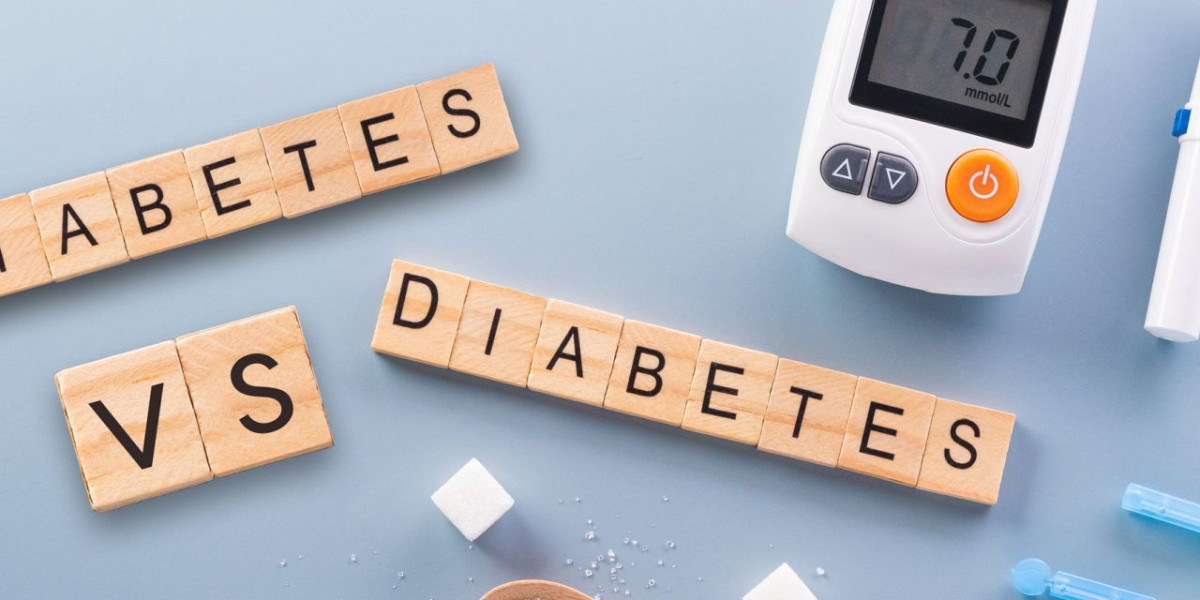Ever heard the term “borderline diabetic”? That’s basically pre-diabetes—but make no mistake, it’s not harmless. In fact, it’s your body's warning signal. So, what truly separates pre-diabetes from full-blown diabetes? Let’s break it down.
Introduction to Blood Sugar and Insulin
Your body turns food into sugar (glucose), which cells use for energy. Insulin, a hormone made by the pancreas, helps this sugar enter your cells. But if insulin doesn't work properly—or isn’t produced enough—sugar builds up in your blood. That’s where things get tricky.
What is Diabetes?
Diabetes is a chronic condition that causes consistently high blood sugar levels. Over time, it can damage your heart, kidneys, eyes, and more.
Type 1 vs. Type 2 Diabetes
- Type 1 is an autoimmune condition where the body attacks insulin-producing cells.
- Type 2 is more common and develops when the body becomes resistant to insulin or doesn’t produce enough.
Symptoms of Diabetes
Fatigue, frequent urination, extreme thirst, blurry vision, and unexplained weight loss are classic signs. If you’ve got more than one, it's time to take action.
What is Pre-Diabetes?
Pre-diabetes is a condition where blood sugar levels are higher than normal but not high enough to be diagnosed as diabetes. It’s like standing on the edge of a cliff—you’re not falling yet, but one wrong move can send you over.
Signs You Might Be Pre-Diabetic
The signs are often subtle or even nonexistent. That’s what makes it dangerous. If you’re overweight, over 40, inactive, or have a family history of diabetes, you might already be in the pre-diabetic zone without knowing it.
Key Differences Between Diabetes and Pre-Diabetes
Pre-diabetes means you still have a chance to reverse the damage. Diabetes, on the other hand, is usually a lifelong condition requiring daily management. Think of pre-diabetes as a yellow light—it’s not too late to hit the brakes.
The Role of HbA1c in Diagnosing Diabetes
What is HbA1c?
HbA1c is a blood test that reflects your average blood sugar levels over the past 2–3 months. It’s one of the most reliable indicators of diabetes and pre-diabetes.
Normal vs. Abnormal HbA1c Levels
- Normal: Below 5.7%
- Pre-diabetes:7% to 6.4%
- Diabetes:5% and above
Knowing your number can be a game-changer in your health journey.
How IDC Helps in Early Detection and Management
IDC (Institute of Diabetes & Endocrinology) provides modern diagnostic services, including HbA1c testing, consultation with endocrinologists, and customized care plans. Early diagnosis means better chances of control and even reversal.
Risk Factors You Should Know
- Obesity
- Sedentary lifestyle
- Family history
- High blood pressure
- Poor diet
These increase your chances of both pre-diabetes and diabetes.
Complications of Uncontrolled Diabetes
Left unchecked, diabetes can lead to:
- Heart disease
- Kidney failure
- Nerve damage
- Vision loss
This is why early detection through HbA1c testing is crucial.
Is Pre-Diabetes Reversible?
Yes! With proper diet, exercise, and weight management, many people reverse pre-diabetes and prevent the onset of type 2 diabetes entirely.
Diet and Lifestyle Tips to Manage Blood Sugar
- Cut down on sugar and refined carbs
- Eat more fiber and whole foods
- Stay active—at least 30 minutes daily
- Lose extra weight
- Sleep well and manage stress
Small steps today can save you from big problems tomorrow.
Monitoring Blood Sugar: Why It Matters
Even if you feel fine, elevated blood sugar can quietly damage your organs. Monitoring through regular HbA1c tests at facilities like IDC is your best defense.
When to Get Tested for HbA1c
If you’re over 40, overweight, or have a family history of diabetes, test at least once a year. IDC makes it easy with walk-in testing and digital report access.
Final Words
Pre-diabetes isn’t just a warning—it’s a second chance. With awareness, early testing at IDC lab, and healthy habits, you can control or even reverse the condition. Don’t wait for symptoms—take action now.
FAQs
- Can pre-diabetes turn into diabetes?
Yes, if left unmanaged, it often progresses to type 2 diabetes. - How often should I check my HbA1c at IDC?
Every 3–6 months if you’re at risk or diagnosed. - Can diet alone reverse pre-diabetes?
In many cases, yes—especially when paired with exercise and weight loss. - What’s the cost of an HbA1c test at IDC?
Rates may vary, but IDC offers affordable packages and expert consultation. - Is pre-diabetes dangerous even without symptoms?
Absolutely. Damage can occur silently. Testing is key.



